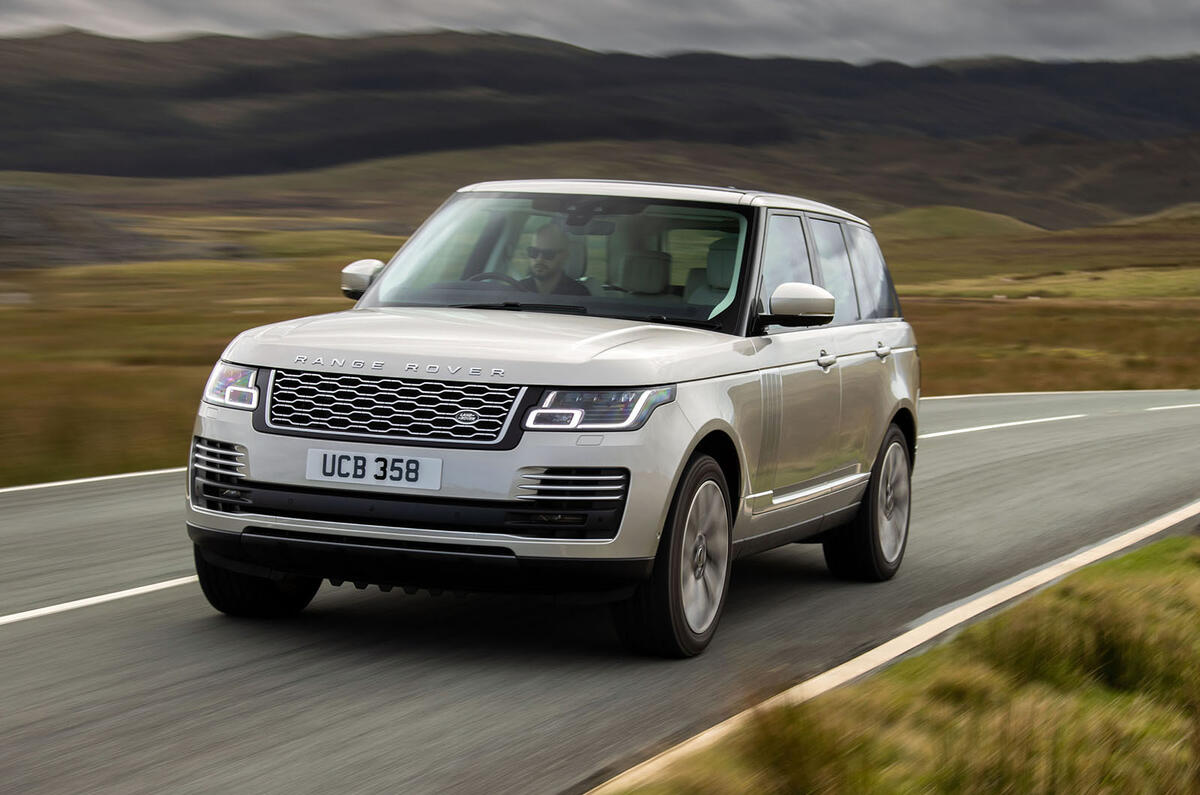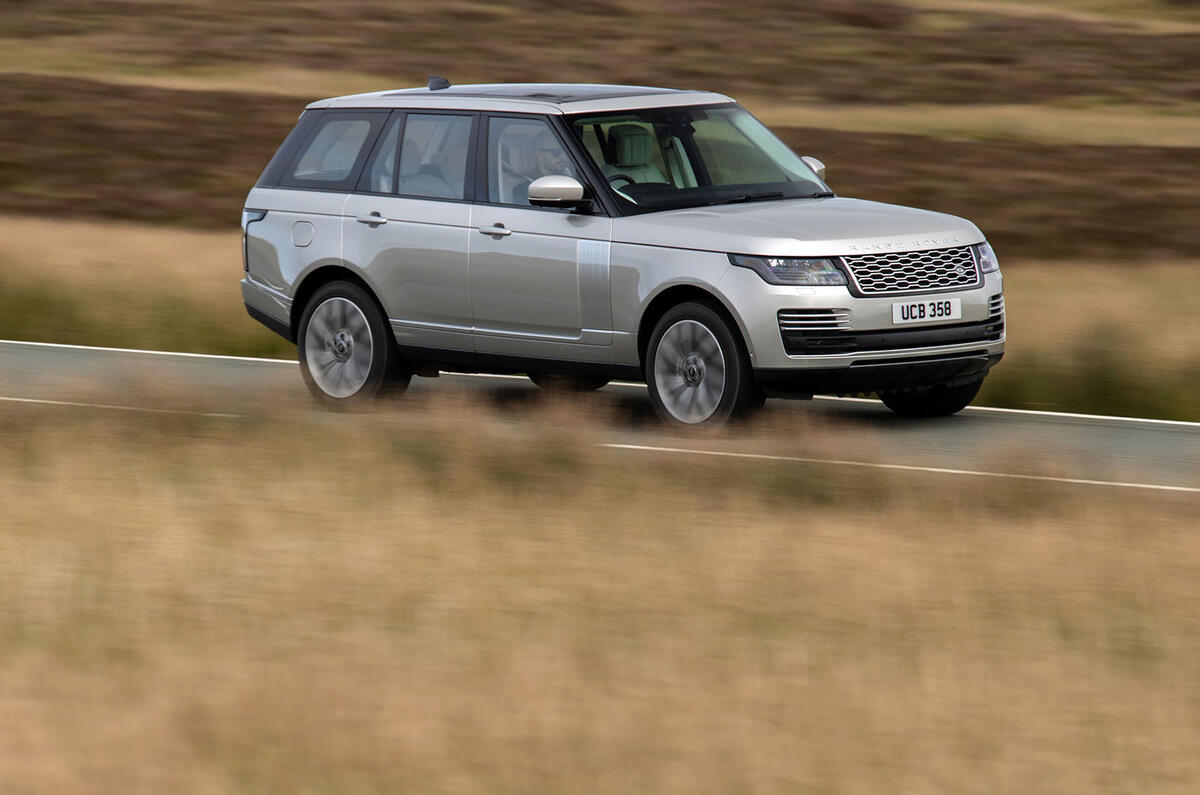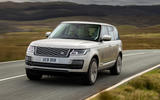What is it?
Land Rover’s all-new, mild-hybridized, 3.0-litre straight six diesel engine powers two versions of the full-sized Range Rover: the Range Rover D350 (which we reviewed a couple of months ago), and this D300 which now becomes the entry-level version of Solihull’s biggest, poshest 4x4, in as-tested Vogue trim level.
From here, the modern Range Rover lineup rockets up to just short of £180,000 for a long-wheelbase, 557bhp supercharged V8 ‘SVAutobiography’. But so what? Discovering what comes as standard on a bottom-rung, £83,000 Range Rover in 2021 is much more interesting. And it's not cloth trim, ‘workout’ windows and a VM Motori four-cylinder diesel anymore, that’s for sure.
As well as height-adjustable air suspension and the de rigeur permanent four-wheel drive with low range, there’s three-zone climate control, digital instruments, a gesture-controlled powered tailgate and a cooled front armrest cubby for starters. The Range Rover still hasn’t received ‘JLR’’s very latest ‘Pivi Pro’ infotainment system, but the Touch Pro Duo system it does use now has both Apple CarPlay and Android Auto smartphone mirroring, and also gives you a wifi hotspot and a digital TV tuner for no extra cost.
What's it like?
This lower-end diesel engine gives up 49bhp to the D350 but less than 40lb ft of torque, and in terms of on-road performance it’s less than half-a-second slower and a couple of miles-to-the-gallon more efficient.
On the road, there’s plenty of accessible performance available; compared even to cars with the supercharged V8 models, this version feels really effortless to drive because it so often has all the torque it needs to meet a roll-on performance demand without needing a downshift. When you do need to work the engine harder, it remains smooth and willing beyond 3500rpm; it isn’t exactly sweet to listen to, but it’s an awfully long way from objectionable.
Rolling refinement is very good indeed. So distant is the hum of the straight six at cruising revs, with wind noise being very well suppressed also, that road noise becomes the greatest source of complaint in the car – and it isn’t really one anyone would actually complain about. Our test car had optional 21in wheels and rode on Pirelli Scorpion Verde all-season tyres, and made just a whisper more road hum than the most refined limousines in the world. With the utmost luxury in mind, there would likely be something to be said for sticking with 20s and the car’s standard rubber.
The Range Rover remains a big car with a certain old-school gentility engineered into its dynamic character: the oversized steering wheel drives a slow-paced rack, and the soft ride lets the car simply wafts its way down the road. Nevertheless it can be driven and placed surprisingly accurately because its controls are so smooth and linear, and so it’s a pleasure to glide serenely onward in it. There also seemed a telling advantage on fine ride control for the D300 we tested compared with a bigger, heavier-engined petrol V8, the former being more level and less disturbed by bigger lumps and bumps on the road than the latter.
Land Rover’s updates to the Range Rover's interior have kept it feeling surprisingly contemporary, despite being so close to replacement. The firm’s glossy touchscreen heater controls integrate very well into the surrounding dashboard design, which is bold and architectural in style. Our test car had a lot of satin chrome and ‘piano black’ trim, as is so fashionable in luxury cars, but deployed it attractively. Even in standard-wheelbase cars, meanwhile, there’s enough space in the back for even taller adult passengers to stretch and sprawl a bit, and the visibility of the world outside from all quarters remains genuinely special.










































Join the debate
Add your comment
But that's the issue, it's not the price of the most basic version, the cheapest and most basic version is the one tested, if you go on their website and build one, the cheapest is £83k, the one tested, which is far more than the from price at the top of the article. So now do you understand why I asked?
This is far more appealing to me than its Velar stablemate, it just looks classier if that makes sense, it's certainly something I would aspire to own, though I know I never will.
Get your facts right Matt no Range Rover has ever had a VM Motori 5 cylinder diesel the original was available with a 4 cylinder VM Motori diesel and Land Rovers Storm 5 cylinder diesel was never used in the Range Rover.
You're right - and I've duly corrected above. Many thanks for noticing.